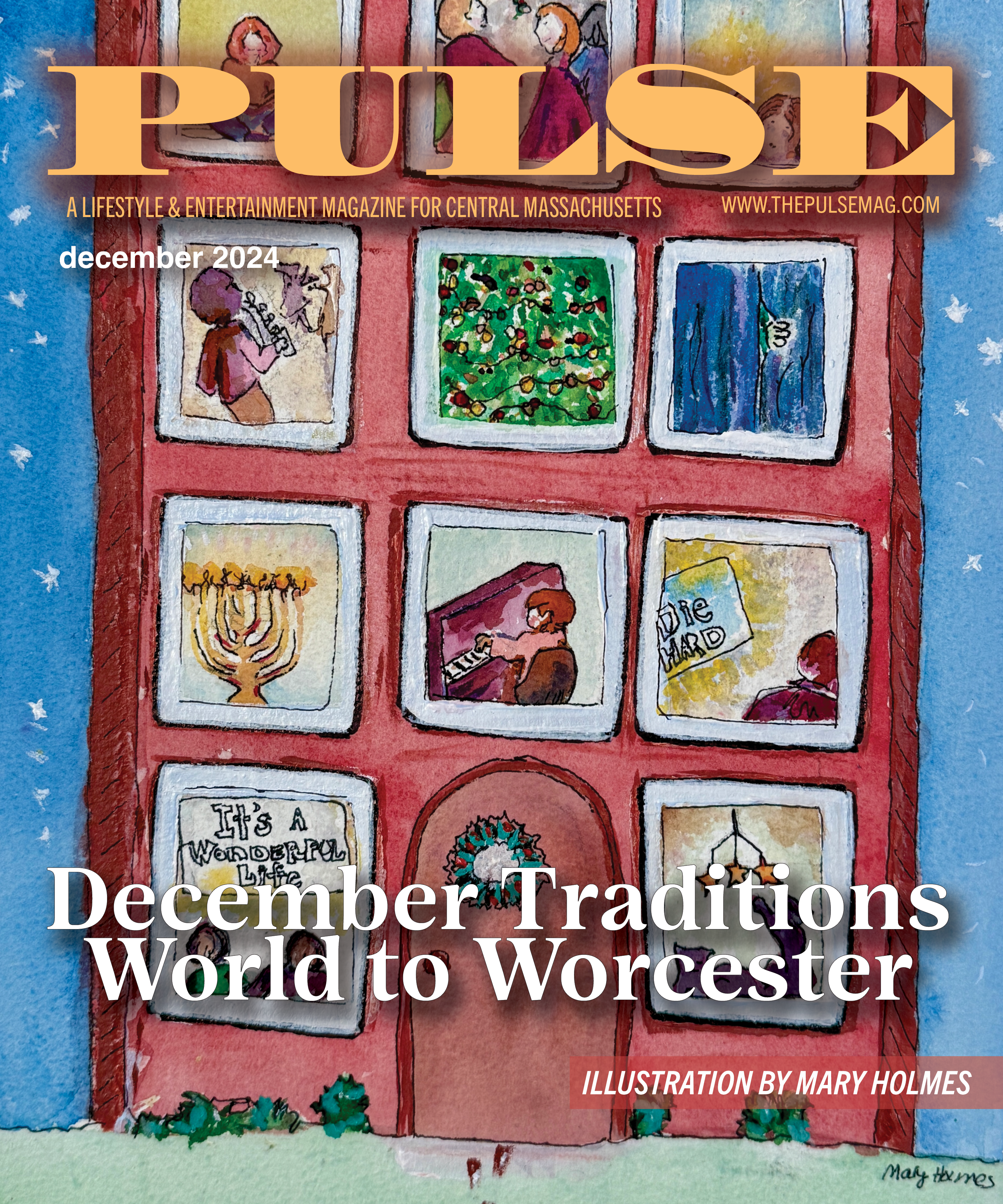Talented David Madsen has first show at Quinsig’s ARTSWorcester Gallery Quinsigamond Community College, 670 West Boylston St., through November 7
October 2003 – London. Paris. Venice. Rome. These are places many artists long to visit so that they might experience art history first hand, as well as, recharge their batteries for their own work. Worcester painter David Madsen hasn’t felt this need. In fact, he has never been outside of Massachusetts. His world of inspiration is all around him, right in his backyard on a little road off West Boylston Street.
In the family for three generations, this verdant setting is lush with fertile grape vines (alas, not the wine making variety, but Madsen says the grapes make pretty good jelly) and other shrubs, bushes, and trees that offer an ever changing riot of color year round.

When not working as a screen printer at Image Apparel, Madsen spends most of his time in his small garage studio in the midst of all this greenery, painting what he sees, feels, and smells. Primarily self-taught (at age four he made his first mural with crayons on his closet wall), he only recently started studying at the School of the Museum of Fine Arts in Boston. He feels that this experience will help him technically and intellectually. Not that he needs much help in either department. His most recent works at his first show ever — now on display at the ARTSWorcester Gallery at Quinsigamond Community College — display a good deal of maturity and skill in several mediums.
To prepare most of the 36 paintings in this show, Madsen often worked on several canvases or panels at a time, laying down single colors from his narrow palette of greens and yellows, building up colors from light to dark, and sometimes even blowing a hair dryer across the paint to hasten the drying process so he could continue to work. Because he often starts painting from photographs he’s taken, at first glance much of his work could be considered representational — leaves, trees, and landscapes. But, with few exceptions, these paintings border on the abstract. The images may seem to be leaves, but it’s the juxtaposition of color that makes his paintings so appealing.

In “Gentle Breeze II” we see a large area of greens and yellows that are obviously close ups of overlapping leaves, translucent with sunlit color. But the longer we look, the more these realistic images begin to dissolve into areas of flat color formed by the dark tones surrounding them. And what are we to make of the colored circles and the irregular area of blinding white? It’s easier to tell what’s what in “The Climb,” with its almost Norman Rockwell-like delineation of young grape leaves and shoots heading skyward toward the sun. But the backdrop asks almost as many questions as it answers. Is that really sky? If so, why is it purple? Are those ragged heliotrope forms clouds or simply blotches of color placed there to accent the greenery?
Only in “Farm Equipment” and “Out for a Walk” does Madsen introduce manmade objects with a giant orange threshing machine in the former and a crosswalk sign in the latter. It’s also interesting to note that his dozen broad view landscapes (OK, there’s a few other manmade objects) are executed on tiny 4- by 5-inch sheets of Plexiglas, whereas his macroscopic images of a single leaf can be nearly four feet tall.

Madsen thinks of his paintings as stress relievers for his audience. “They are feel good paintings”, he says. “Just relax and enjoy the serenity. Let the painting take you somewhere in your own mind. If you walk away moved or touched in some way, then I have done my job as an artist.”






